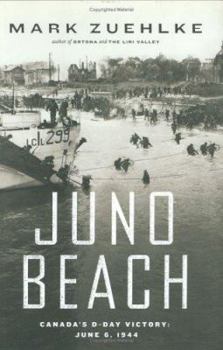Juno Beach: Canada's D-Day Victory-- June 6, 1944
(Book #4 in the Canadian Battle Series)
Select Format
Select Condition 
Book Overview
On June 6, 1944 the greatest armada in history stood off Normandy and the largest amphibious invasion ever began as 107,000 men aboard 6,000 ships pressed toward the coast. Among this number were... This description may be from another edition of this product.
Format:Hardcover
Language:English
ISBN:1553650506
ISBN13:9781553650508
Release Date:January 2005
Publisher:Douglas & McIntyre Ltd
Length:415 Pages
Weight:1.66 lbs.
Customer Reviews
2 ratings
As good as the Canadian troops it is about
Published by Thriftbooks.com User , 19 years ago
Excellent account of the most impressive effort of D-Day. Enough of this Omaha Beach chatter! Here is the real story of D-Day, told in detail heretofore unseen.
Interesting read
Published by Thriftbooks.com User , 21 years ago
Juno is a highly detailed account of the Normandy invasion, on all three fronts, air, land, and sea. Its focus is on the Canadian participation of units and their actions on June 6th. Normally, Canadian participation in this pivotal World War 2 battle is usually glossed over by other historians, if mentioned at all.Leading up to the invasion, there are chapters on how different units trained and prepared, from the 1st Canadian Parachute Battalion and its role with the British 6th Airborne Division, to the minesweepers that swept lanes into the beaches for the assault craft, to the fighter and bomber units that blasted the beach defences on Juno beach. By the mid-point of the book, units of the 3rd Canadian Infantry Division are steaming for the beaches. The battle for all 5 sectors of the beach are pretty interesting and filled with moments of courage and bravado, as men struggle up the sand and rush machinegun nests and bunkers. There are several sections detailing German response and the opinions of the commanders of the 716th Infantry, the 21st Panzer, and other units facing the Canadians. These were interesting but I would have liked more detail. There are also interviews with veterans who actually fought there as well as information from government archives. The only thing I found lacking in this book that I had enjoyed in Zuehlke's Ortona book was the anecdotes and quirky little stories that punctuated that volume. It should be noted that this book only details the events leading up to and the day of June 6th. The following battles for Caen and the Falaise Gap are not part of this book. All in all, it kept me interested and I found it hard to put down.






